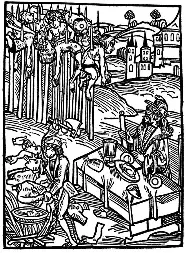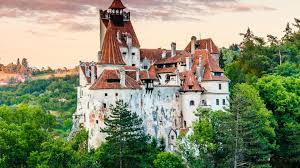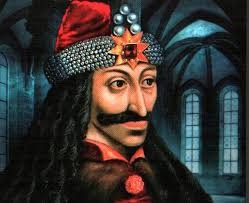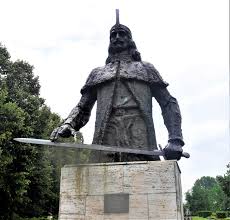Vaša košarica je trenutno prazna!
Known as the inspiration for Dracula, Vlad III, also known as Vlad the Impaler or Vlad Țepeș, was a 15th-century ruler of Wallachia whose name evokes both fear and fascination. His brutal methods against his enemies, particularly the Ottoman Empire, have cemented his place in history as a figure of controversy. Was he a valiant defender of his homeland, or a cruel despot? Let’s delve into his life, tactical genius, and the myths that continue to shroud him.
A Life Forged in Conflict

Born in Transylvania in 1431, Vlad’s early life was marked by the turbulent political landscape of Eastern Europe. His father, Vlad II Dracul, was a member of the Order of the Dragon, a chivalric order dedicated to fighting the Ottomans, which is where the “Dracul” (meaning “dragon” or “devil”) part of his name originated. As a boy, Vlad and his younger brother Radu were held hostage by the Ottoman Sultan Mehmed II, a common tactic to ensure the loyalty of vassal rulers. This period of captivity deeply influenced Vlad, exposing him to Ottoman military strategies and likely fueling his intense animosity towards them. He learned to speak Turkish, observed the inner workings of the Ottoman court, and witnessed firsthand their formidable military might. This intimate knowledge of his future adversary would prove invaluable in his later struggles.
Upon his return to Wallachia and after several power struggles, often involving betrayals and shifting alliances among the Wallachian boyars and neighboring powers like Hungary and Moldavia, Vlad finally secured the throne in 1456. His reign was characterized by relentless efforts to consolidate power and defend Wallachia against the encroaching Ottoman Empire, a formidable force that had already conquered much of the Balkans and now set its sights on expanding into Central Europe. Vlad understood that Wallachia’s survival depended on a strong, centralized authority and a resolute stance against Ottoman domination.
Tactical Genius and Brutal Methods

Vlad’s military campaigns against the Ottomans were marked by his innovative and often terrifying tactics. He understood that Wallachia, a smaller state with limited resources, could not defeat the vast Ottoman army in conventional pitched battles. Instead, he employed guerrilla warfare, ambushes, and psychological warfare to great effect, transforming Wallachia’s rugged terrain into an advantage.
One of his most famous and gruesome tactics was impalement, which earned him the moniker “Țepeș” (the Impaler) from the Romanians. He would erect forests of stakes on which he impaled his enemies, often Ottoman prisoners of war, criminals, and even disloyal boyars (nobles) who threatened his authority or conspired against him. This horrifying spectacle served as a powerful deterrent, instilling terror in both his enemies and his own populace, ensuring obedience. The sheer scale of these impalements, with reports of tens of thousands of victims, sent shivers down the spines of even the most hardened Ottoman soldiers. These “forests of the impaled” were strategically placed at Wallachia’s borders and along invasion routes, designed to break the morale of advancing armies before any direct confrontation.
A prime example of his tactical brilliance was the Night Attack of 1462. When Sultan Mehmed II, fresh from his conquest of Constantinople and leading an army estimated at 60,000 to 90,000 strong, marched into Wallachia with the intention of crushing Vlad’s resistance, Vlad, facing overwhelming odds, launched a surprise night raid on the Ottoman camp near Târgoviște, his capital. Under the cover of darkness, Vlad and his elite cavalry units infiltrated the sprawling Ottoman encampment. Their aim was to assassinate the Sultan himself. Though they failed to reach Mehmed II, the attack caused immense chaos, killed thousands of soldiers, and demoralized the Sultan, forcing him to retreat. This audacious move showcased Vlad’s willingness to take extreme risks, his deep understanding of psychological warfare, and his ability to exploit the element of surprise against a vastly superior force. The Sultan, a seasoned conqueror, was reportedly so horrified by the sight of impaled corpses outside Târgoviște that he abandoned his campaign.
Beyond impalement and surprise attacks, Vlad also employed scorched-earth tactics, poisoning wells and destroying villages along the Ottoman invasion route, leaving nothing for the advancing army to forage, further hindering their progress. He deliberately created a desolate wasteland, making it impossible for the large Ottoman army to sustain itself. His cavalry units would harass Ottoman supply lines, making their advance slow and costly.
Domestic Policies and the Iron Fist
While his foreign policy was dominated by the fight against the Ottomans, Vlad also implemented strict domestic policies to consolidate his power and maintain order. He cracked down on crime and corruption with an iron fist, applying the same brutal punishments to thieves and vagrants as he did to his enemies. There are numerous anecdotes, possibly exaggerated but illustrative of his reputation, describing how he ensured safety and honesty within his realm. One popular story recounts a golden cup left in a public square, untouched for days, as no one dared to steal it for fear of Vlad’s wrath. He aimed to create a society where law and order were absolute, even if enforced through terror. He also challenged the traditional power of the Wallachian boyars, executing many who he deemed disloyal or who had continuously shifted their allegiances, replacing them with new men loyal to him. This ruthless suppression of internal dissent was crucial for his ability to wage war against the Ottomans without fearing betrayal from within.
The Myths and the Legacy

Vlad’s brutal reputation quickly spread throughout Europe, amplified by printed pamphlets that sensationalized his atrocities. These woodcut pamphlets, often originating from Germany, depicted him as a bloodthirsty monster, detailing his gruesome acts with vivid, often exaggerated, descriptions. These accounts often portrayed him as a demonic figure, a direct contrast to the image of a Christian defender against the “infidel” Ottomans that he cultivated for alliances with Western powers. It is these sensationalized stories, disseminated widely through early printing presses, that ultimately served as a primary inspiration for Bram Stoker’s iconic vampire, Count Dracula, almost four centuries later. Stoker was likely influenced by accounts of Vlad’s cruelty and the common associations of the name “Dracul” with the devil.
However, in Romania, Vlad Tepeș is often viewed as a national hero who fiercely defended his country’s independence against a powerful enemy. His ruthlessness, while undeniably cruel, is sometimes contextualized as a necessary evil in an era of constant warfare and existential threat. In a period when small principalities were constantly threatened by powerful empires, strong and uncompromising leadership was often seen as the only way to survive. He is credited with bringing a period of relative stability to Wallachia and strengthening its centralized government, laying the groundwork for a more unified and resilient state. His image as a steadfast defender of Christendom against the Ottoman tide resonates deeply within Romanian national identity.
Vlad’s reign ended in 1476, when he was killed in battle, likely against the Ottomans or their Wallachian allies, though the exact circumstances of his death remain a subject of historical debate. His head was reportedly sent to Constantinople as a trophy, a grim end for a man who had instilled so much fear in his enemies.

So, was Vlad Tepeș a hero or a tyrant? The answer, like history itself, is complex and depends on perspective. He was undoubtedly a brutal ruler who employed horrific methods to achieve his goals. His actions, by modern standards, are indefensible. Yet, he was also a shrewd military strategist and a determined leader who fought relentlessly to preserve his homeland against an overwhelming force that threatened to engulf all of Europe. His legacy remains a potent mix of historical fact, national pride, and gothic myth, forever intertwined with the chilling legend of Dracula. He stands as a stark reminder of the harsh realities of medieval warfare and the desperate measures sometimes taken to ensure survival in a world where states constantly vied for power and dominance.

